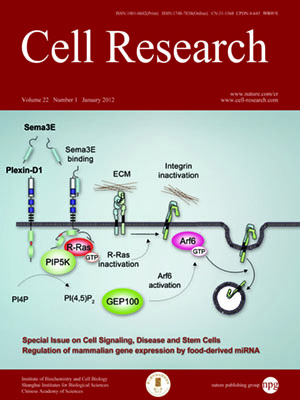
Volume 22, No 1, Jan 2012
ISSN: 1001-0602
EISSN: 1748-7838 2018
impact factor 17.848*
(Clarivate Analytics, 2019)
Volume 22 Issue 1, January 2012: 23-32
REVIEWS
Semaphorin signaling in angiogenesis, lymphangiogenesis and cancer
Atsuko Sakurai, Colleen Doci and J Silvio Gutkind
Oral and Pharyngeal Cancer Branch, National Institute of Dental and Craniofacial Research, National Institutes of Health, 30 Convent Drive, Rm. 211, Bethesda, MD 20892, USA
Correspondence: J Silvio Gutkind,(sg39v@nih.gov)
Angiogenesis, the formation of new blood vessels from preexisting vasculature, is essential for many physiological processes, and aberrant angiogenesis contributes to some of the most prevalent human diseases, including cancer. Angiogenesis is controlled by delicate balance between pro- and anti-angiogenic signals. While pro-angiogenic signaling has been extensively investigated, how developmentally regulated, naturally occurring anti-angiogenic molecules prevent the excessive growth of vascular and lymphatic vessels is still poorly understood. In this review, we summarize the current knowledge on how semaphorins and their receptors, plexins and neuropilins, control normal and pathological angiogenesis, with an emphasis on semaphorin-regulated anti-angiogenic signaling circuitries in vascular and lymphatic endothelial cells. This emerging body of information may afford the opportunity to develop novel anti-angiogenic therapeutic strategies.
Cell Research (2012) 22:23-32. doi:10.1038/cr.2011.198; published online 13 December 2011
FULL TEXT | PDF
Browse 2399


